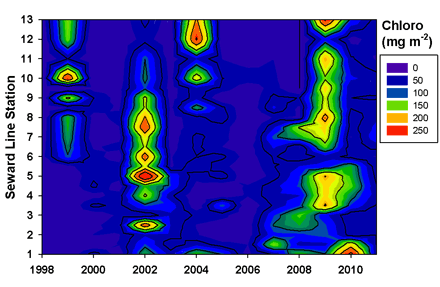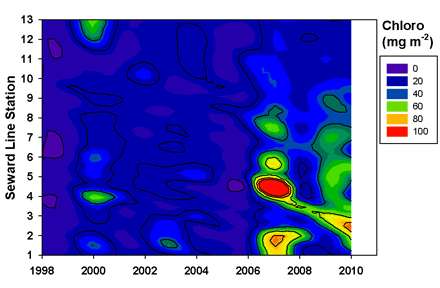The 13 years of observations along the Seward Line capture the temperature signal of inter-annual variation in chlorophyll (an index of algal biomass) in the upper 50m of the ocean.
Cruises each May (left) suggest that colder years have more chlorophyll on the inner part of the Seward Line due to a delayed spring bloom. The spring bloom is a relatively brief event, lasting only 1-2 weeks as the water column stratifies, so hitting it exactly is difficult. By looking at nutrient concentrations, in conjunction with chlorophyll, we can determine if the cruise occurred pre-bloom, post-bloom, or during the bloom, since the bloom strips the nutrients mixed into surface waters by winter storms from the upper ocean to fuel algal growth.
Cruises in August (left) have much lower chlorophyll than observed during the spring. This low concentration is generally associated with small algal cells that support a much different zooplankton community than present during the spring. During the recent cool years, fall mixing of the water column appears to occur due to the weaker stratification, and this can result in a small fall bloom that provides a last pulse of food to carry zooplankton species through the winter.









